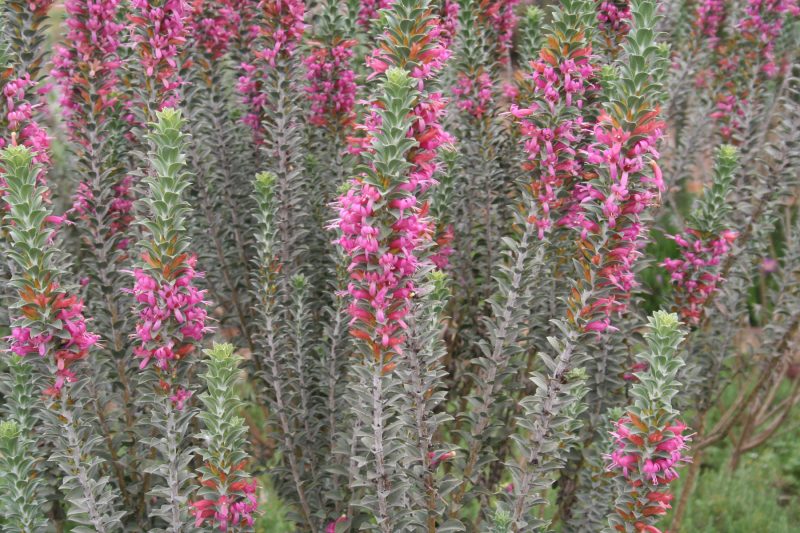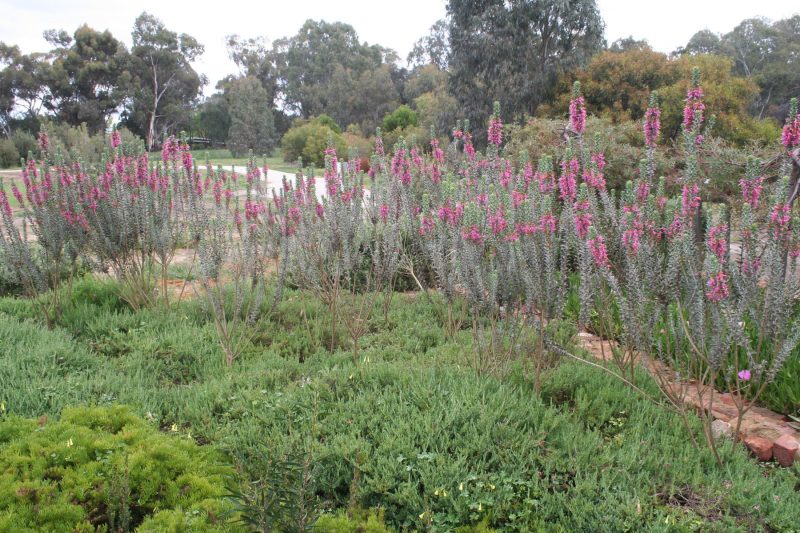Eremophilas can be marvellous plants in the garden, but their reliability in a variety of soils and climates is still being established by their many devoted growers.
As so many eremophilas have been only recently collected from the wild and introduced into our gardens they are still a work in progress as garden plants.
They have so many good points for garden design; many are small, compact plants which bloom over long periods and attract both birds and insects.
They come with a variety of flower and foliage colour and form. Most of them react enthusiastically to pruning, even harsh pruning. They can be clipped into hedges or larger plants used as screens and windbreaks. Many eremophilas make successful groundcovers.
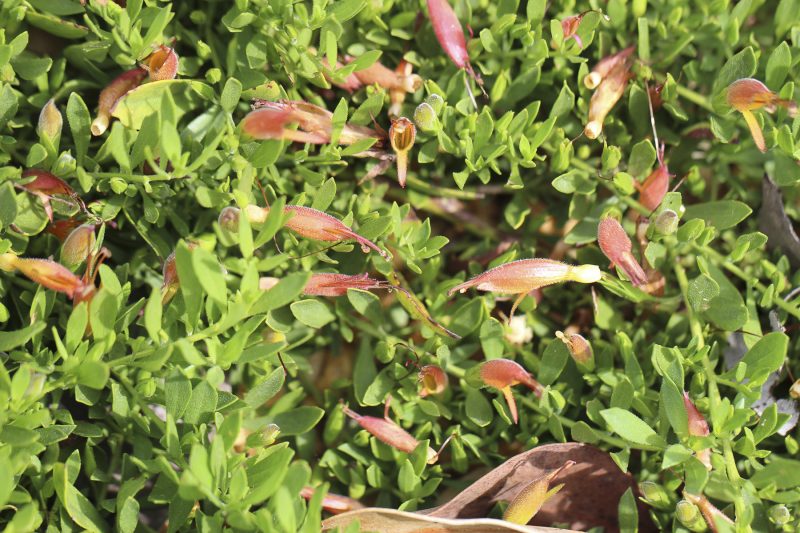
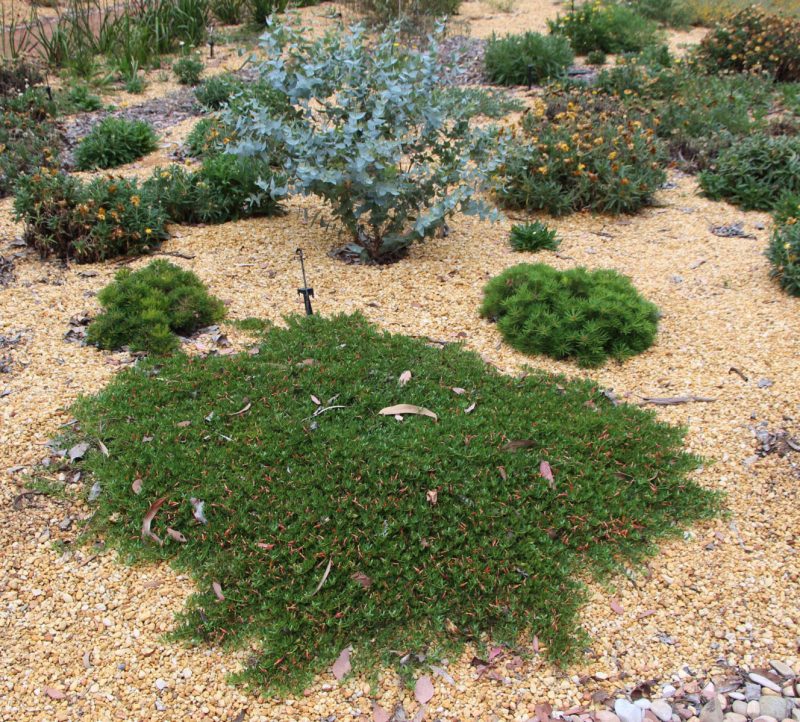
My garden history with eremophilas has been passionate but uncertain. When I first met a wide variety of eremohilas at Lang’s Nursery in Mildura in October 2010, I enthusiastically purchased ten plants new to me. Despite planting them in full sun in a mixture of native potting mix and sand, they all died in the Canberra rainy season of 2010-11. This was discouraging, but they were not the only group of plants which died during that rainy period.
On searching through my garden records, up to May 2020, I find that I have purchased 600 eremophilas of 220 different species, hybrids and cultivars in the last 17 years of which 35% have died or been removed for failure to thrive. I also notice (thankfully) that my success rate is improving over the years – either I am choosing more wisely, Canberra’s weather is milder, or I am growing eremophilas better, probably a mixture of all three.
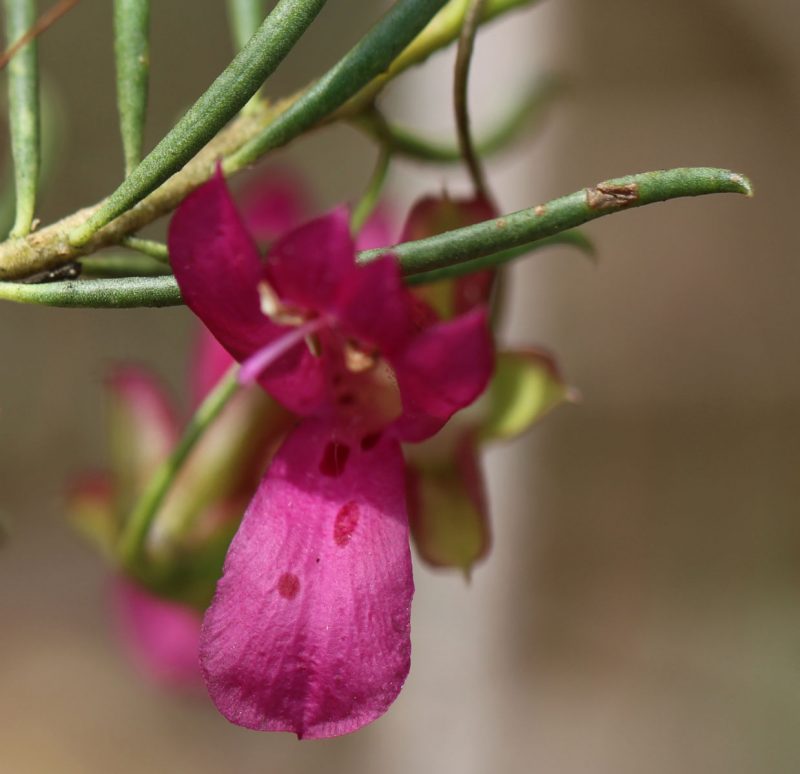
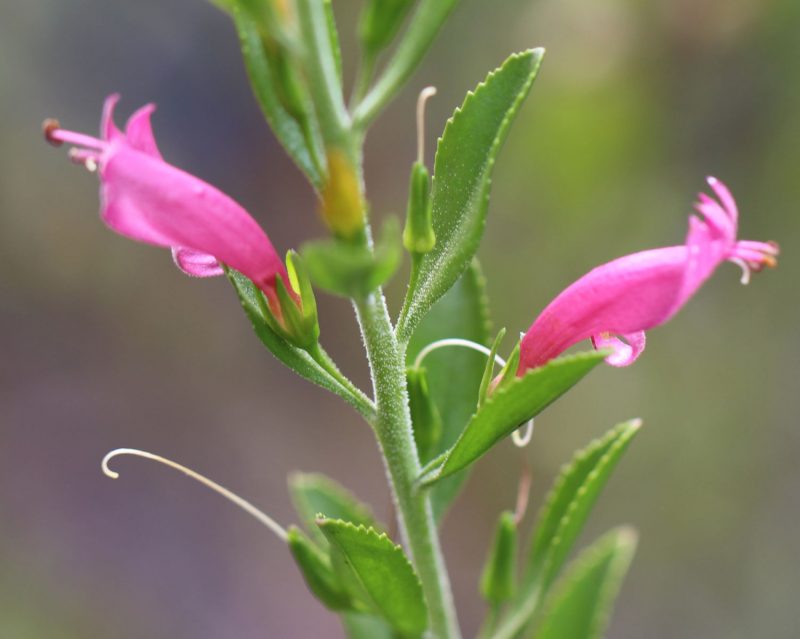
I had fixed in my head that I could not grow the silver or grey leaved eremophilas as well as the green leaved ones, but my statistics show that there is little difference between the two groups, 28% failures in green leaved varieties and 33% of deaths in silver or grey leaved varieties.
According to my notes the majority of deaths, 53%, occurred during winter (my comment is usually ‘frosted off’).
Equal low percentages of plants died in the rain and the heat, only 8% for each, and 20% were removed for failure to thrive or have outgrown their space. The others suffered various accidents and tribulations, such as ‘dug up by possum’, ‘stepped on’, ‘did not recover from being cut back’, ‘overwhelmed by other plants’, ‘blown out of the ground’, ‘unearthed by fox’, ‘whipper-snipped in error’ or ‘nibbled off by raven’, the usual litany of garden woes.
Eremophilas bloom for a long time
This is one of their best characteristics.
In 2016 in our garden 27 different varieties of eremophila flowered for more than half the year and two, Eremophila maculata brevifolia and Eremophila maculata ‘Aurea’ flowered every week of the year, even during Canberra’s winter.
This is important for both birds and insects. ‘Approximately 75% of eremophilas are insect pollinated (entomophilous), with the remainder being bird pollinated (ornithophilous), or adapted for pollination by either.’ (Colin Jennings, Newsletter of the Australian Plants Society (South Australia), August 2001).
Long periods of flower, particularly in the winter in Canberra and other cooler regions, can keep both insects and birds alive.
I have purchased eremophilas from more than twenty different sources over the years, as well as receiving many as gifts from propagating friends. Most have come from sources close to Canberra, Yarralumla native plants sale, Stocks Native Nursery, Heritage Nursery and Australian Native Plants Society Canberra sale, ANPS Market Day, and Cool Country Natives, but some from South Australian Plants Society sale, and nurseries such as Belair, Port Augusta, Maffra, Kuranga, Goldfields and Sunvalley.
My favourite eremophilas
Some of my favourite plants are outlined below.
Eremophila alternifolia for its deep pink bloom and long flowering period, shown above.
Eremophila alternifolia x Myoporum platycarpum for its delicate pink flowers.
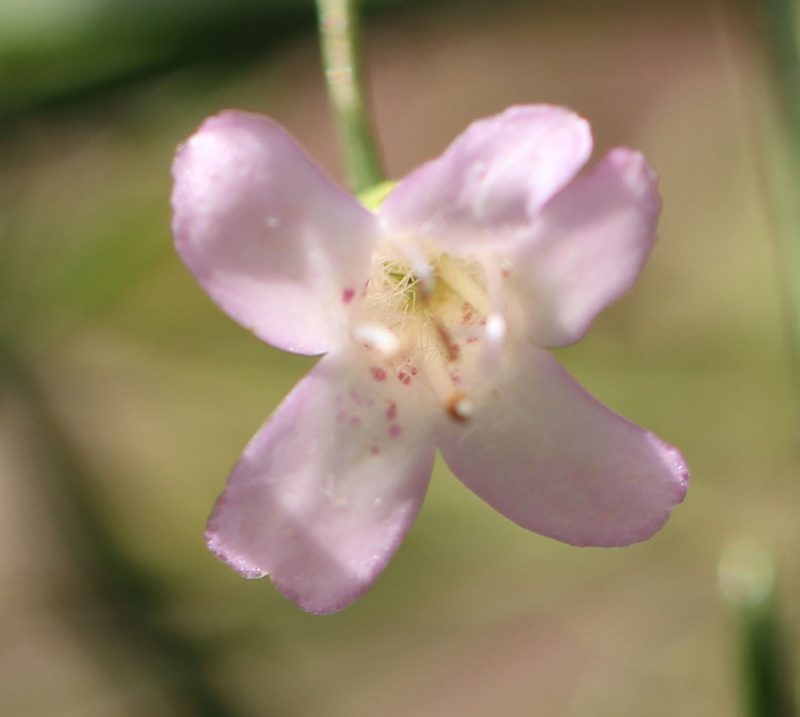
Eremophila ‘Belalla Gold’ for its bright yellow flowers over a long period.
Eremophila ‘Beryl’s Blue’ has performed admirably in our garden conditions. We first planted one, (with some trepidation as it is silver leaved and related to E. nivea), in August 2015 and this plant had grown to 1m high and wide with silver grey leaves and blue flowers over a very long period.
Much encouraged we planted eight more from 2017-20 and look forward to them performing well. This plant is a hybrid of E. nivea and was developed in a garden in Natya in northern Victoria.
We have tried repeatedly to grow Eremophila nivea and its grafted cultivar ‘Gubburra Bells’ in our garden without success.
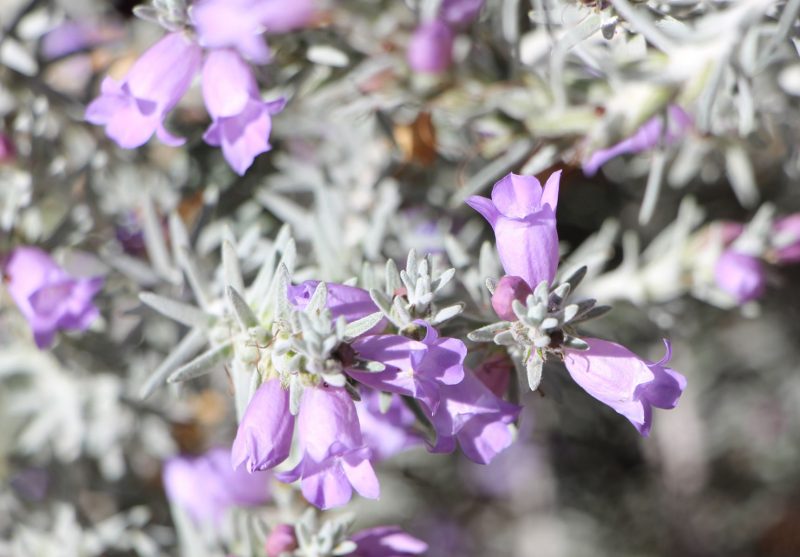
We planted two Eremophila brevifolia in 2017 and these have grown to 1m x 1m with white flowers over a long period. The foliage consists of small, sticky, bright green leaves. These plant have a ‘certain bony charm’ as Christopher Lloyd said to Verbena bonariensis.
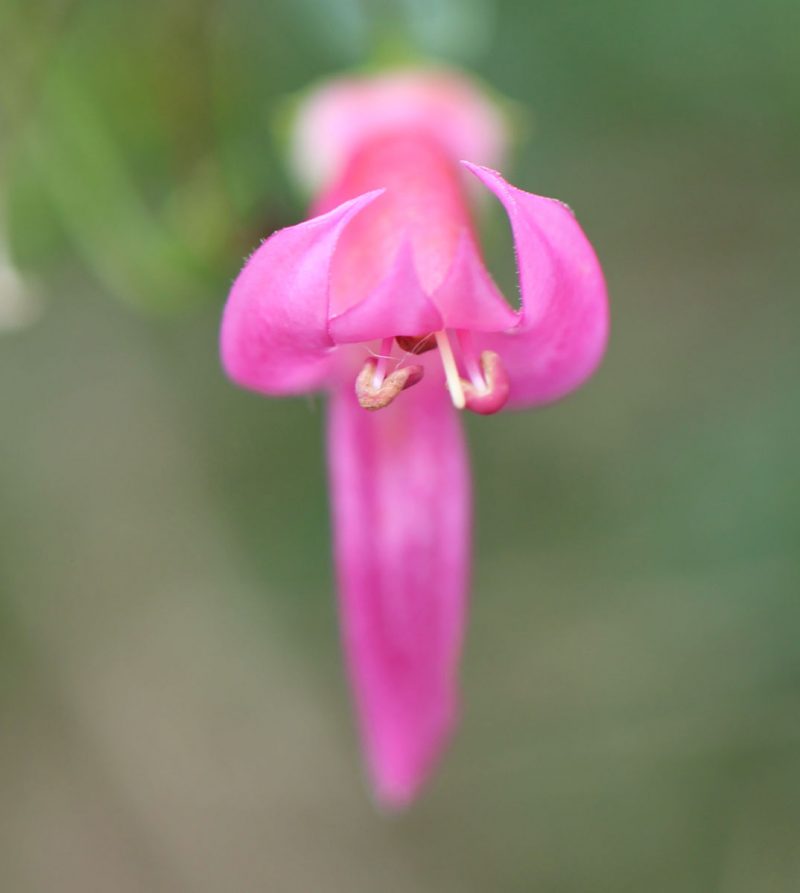
We planted Eremophila calorhabdos x denticulata in a pot in December 2013 and into the ground in March 2014.
This plant grew to 1m x 1m with deep pink flowers in abundance. Ben tried making cuttings of this plant but despite growing well, and even flowering in the pots, they all died in the garden.
By October 2018 Ben had another 8 cuttings ready to go into the garden. These plants have thrived amazingly well and grown to 1.5m high and wide, threatening to take over the area in which they are planted.
We cannot see any difference in the conditions where the first cuttings were planted and failed and the second crop which has thrived.
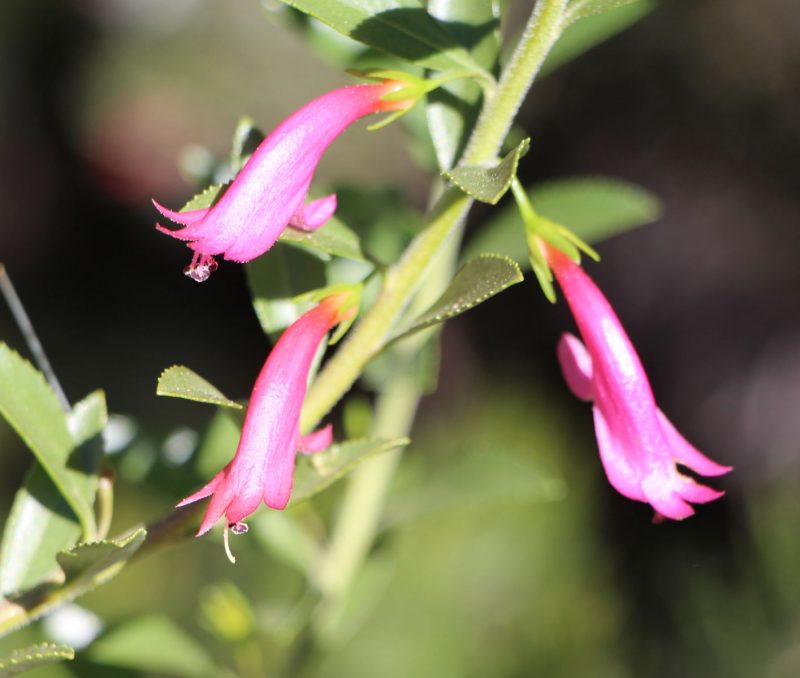
We planted Eremophila christophori, white flowered form, in September 2017 and this plant has grown to 1.5m high and 1m wide and is expected to grow to 2.5m high and wide. The foliage is light green and the flowers last for months. We have now planted a blue flowered form in August 2019 and are on the hunt for the pink-flowered form of this useful plant.
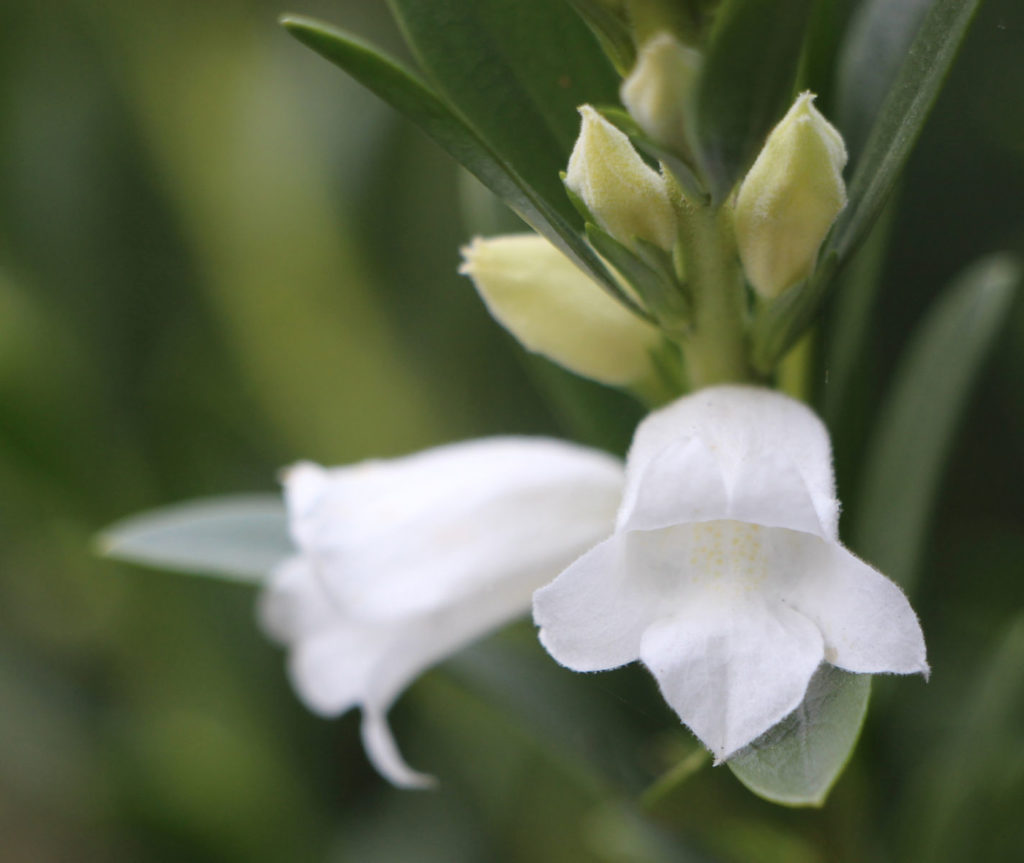
The Meringur hybrid eremophilas bred by Ray Schilling have proved a great success in our garden. We love the linear foliage and the constant flowers of these plants and thoroughly recommend trying them in your garden.
We planted two Eremophila alternifolia x bignoniiflora ‘Meringur Crimson’ in spring 2018. These plants form a shrub 3m high x 2m wide with long, thin hanging foliage and pinkish flowers over a long period. Both these plants have grown and performed well but the flowers are definitely not crimson. We also received two ‘Meringur Crimson’ plants from a friend who guaranteed that these have crimson blooms and planted them in February 2019.
By March 2020 one of these plants had bloomed with flowers of a bright vibrant crimson. So which plant is the correct ‘Meringur Crimson’?
As Ian Tranter has pointed out, the crimson form is very like E. ‘Passionate Lady’, but does differ in some respects, (Eremophila Study Group Newsletter 119 February 2018, p. 15).
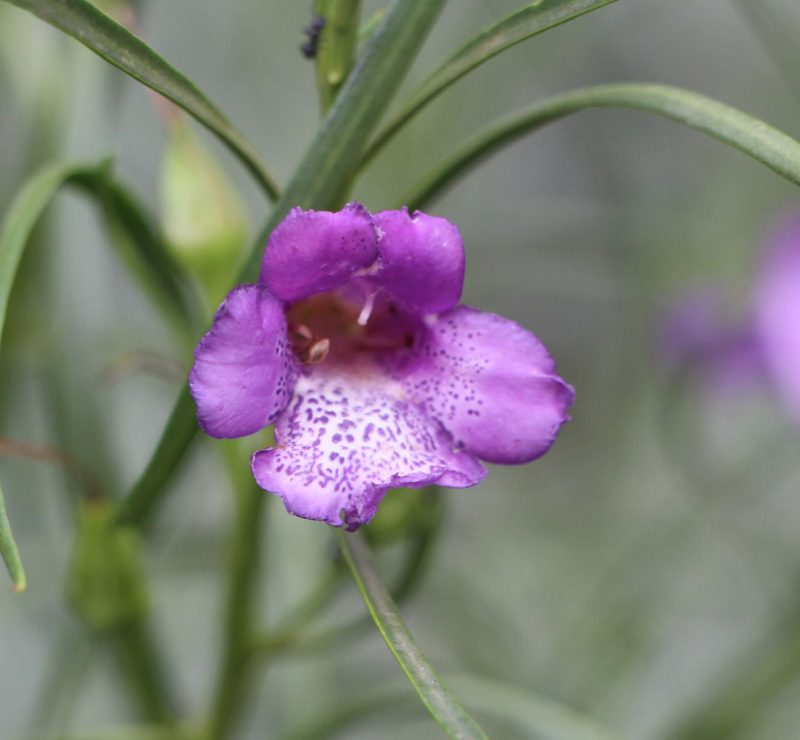
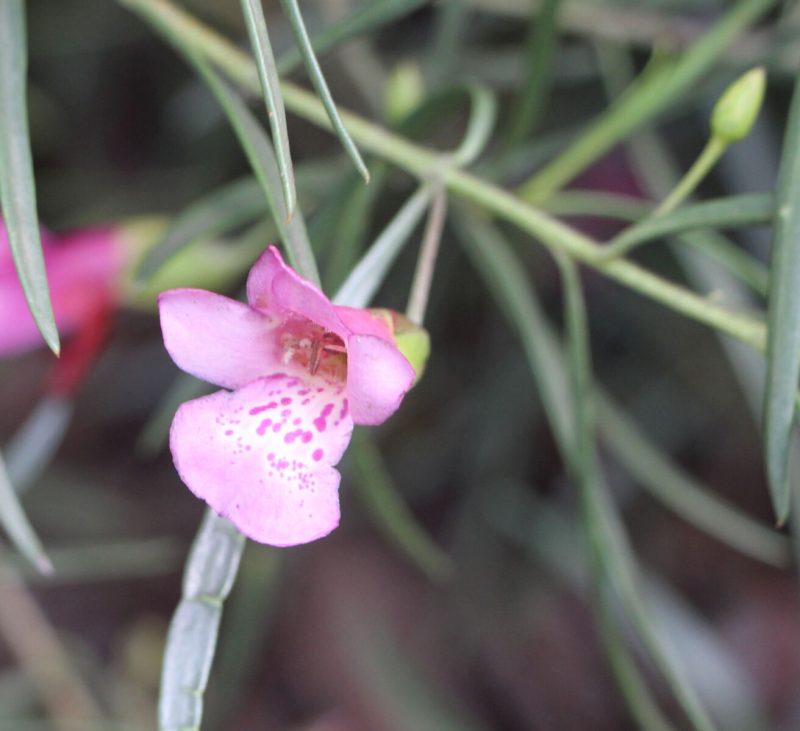
We planted Eremophila bignoniiflora x alternifolia ‘Meringur Isaac’ first in March 2015, another plant developed by Ray Schilling.
This plant has grown to 1m x 1.5m across with linear foliage and pink flowers over a long period.
We planted two Eremophila bignoniiflora x pururascens ‘Meringur Ray’ in March 2020 and have already seen bright cerise flowers. This plant should form an upright dense shrub to 3-4m high x 2-3m wide, although probably smaller than that in Canberra.
We planted Eremophila bignoniiflora x viscida ‘Meringur Midnight’ first in November 2015. This plant grows to 4m high and 2m wide and is already 3m high in our garden. This plant has long narrow green leaves and bright mauve flowers, which we saw first in November 2016. Our original plant was stripped of all its leaves by the severe hailstorm in January 20, 2020 in Canberra, but has releafed and looks well. We planted two more in 2016 and 2018 which are also growing well.
We planted Eremophila bignoniifolia x polyclada, or ‘Big Poly’, in April 2008 and after a rocky start this plant has grown to 3m high and wide in our garden. This plant has dark green strappy leaves with white flowers with lilac spotted throats in profusion. This plant responds well to pruning.
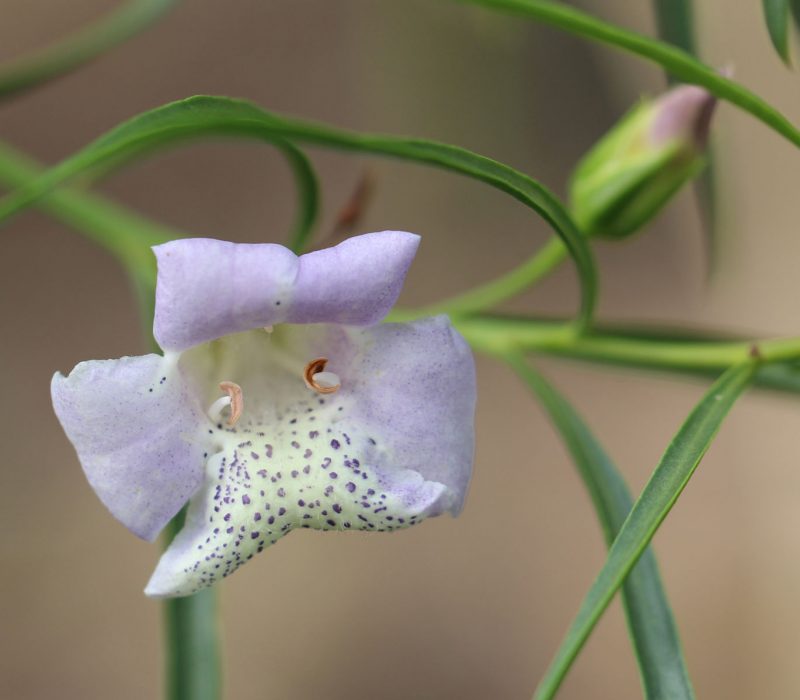
Eremophila biserrata, a groundcover with perky orange flowers.
Eremophila calorhabdos for its upright form and bright pink flowers.
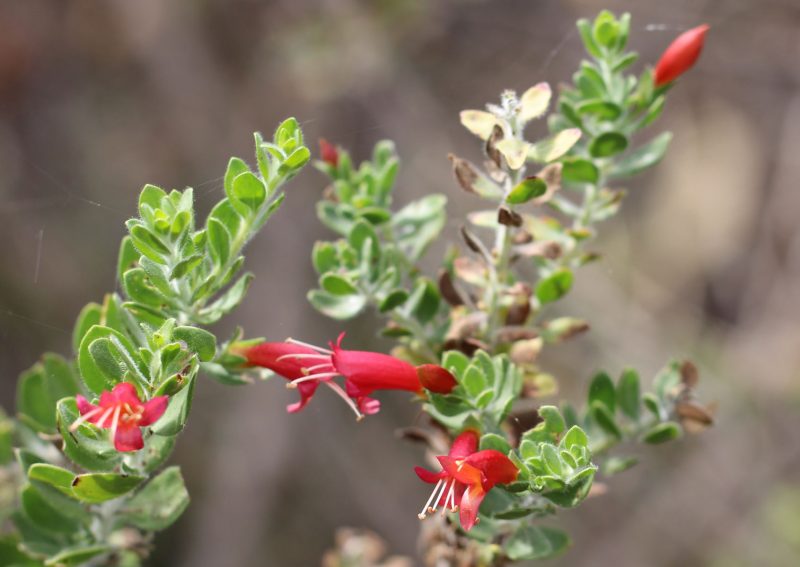
Eremophila dempsteri for its dense flowering habit.
Another wonderful groundcover is Eremophila glabra ‘Fruit Salad’ which we first planted in a group of six in 2015. This plant is prostrate and can spread to 1.5m wide with bright green leaves and perky orange and yellow flowers over a long period. This plant grows so vigorously for us that we are constantly clipping it back into shape.
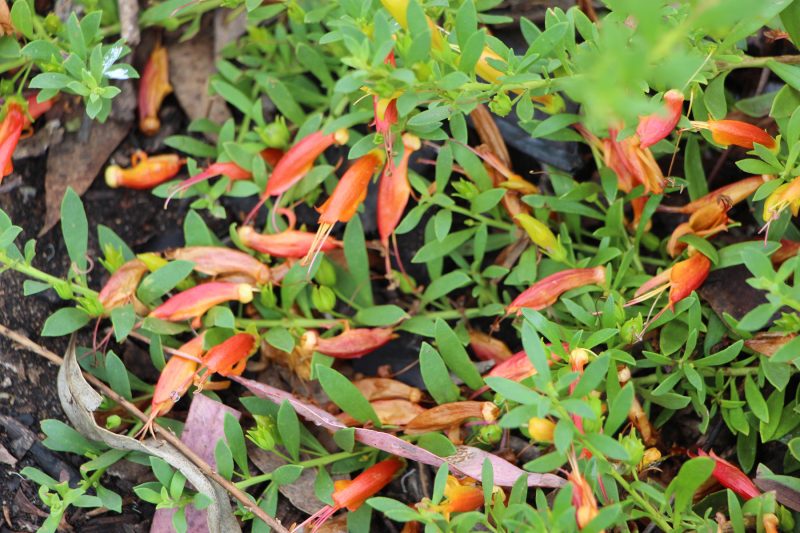
Eremophila glabra ‘Roseworthy’ for its flat habit, dense flowering and even spread of foliage.
Eremophila decipiens with fine bright green foliage and brilliant red flowers.
We planted Eremophila dempsteri, white-flowered form, in May 2011, which flowered for us in October 2011 and in September 2012 after which we moved it to a sunnier and drier position where it has grown to 1.5m high and 1m wide. We planted a dark blue flowered form in February 2014, but this one was whipper-snipped by mistake and did not recover. We have now planted a pink-flowered form in December 2016 and this plant has grow to 1m tall and has flowered well in October 2018. These plants improve and flower more freely with age, as do many eremophilas.
Eremophila densifolia is a small mounding shrub to 0.5m high and 1-3m wide with narrow crowded leaves and tubular purple flowers. We planted one in November 2010, but it died in January 2012. The second one we planted in October 2011 has grown exceptionally well and Ben has made cuttings on several occasions. These plants thrive under and around other shrubs and trees where they serve as attractive fillers.
Eremophila ‘Fairy Floss’ orange buds, pink flowers, and never stops blooming
We planted three Eremophila glabra ‘Hello Cocky’ in March 2015 and these have formed a low compact shrub, 0.5m high and up to 1.5m wide, with silver foliage and yellow flowers. These plants were so successful in our garden that we planted three of them in the Terra Australis garden at the National Arboretum where they are forming satisfactory mounds of silver foliage.
Eremophila glabra ‘Rottnest Emu Bush’ in a group of three, planted in October 2015, have grown larger than advertised in our garden to 1.5m high and wide. They did blow over in the wind and needed staking two years later, but since then have bloomed with dark red flowers over many months.
Eremophila glabra ‘Steep Point Green’ with even brighter red flowers
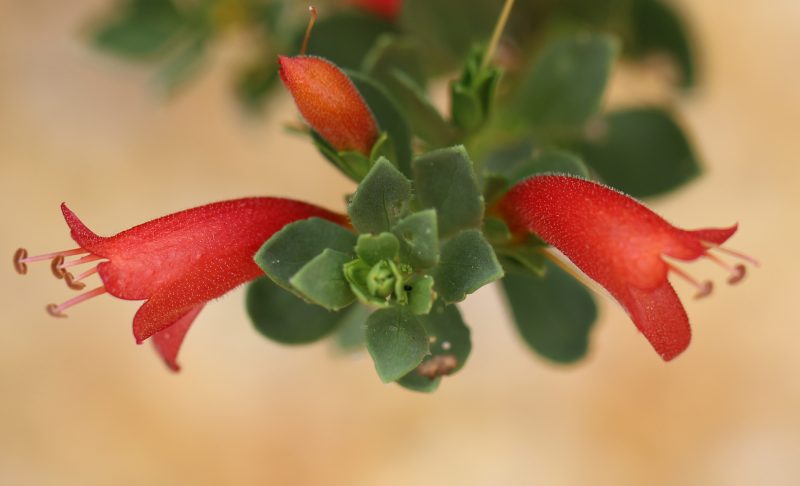
Eremophila glabra subsp. albicans (orange) for its cheerful orange flowers. The one below is called ‘Silver Ball’.
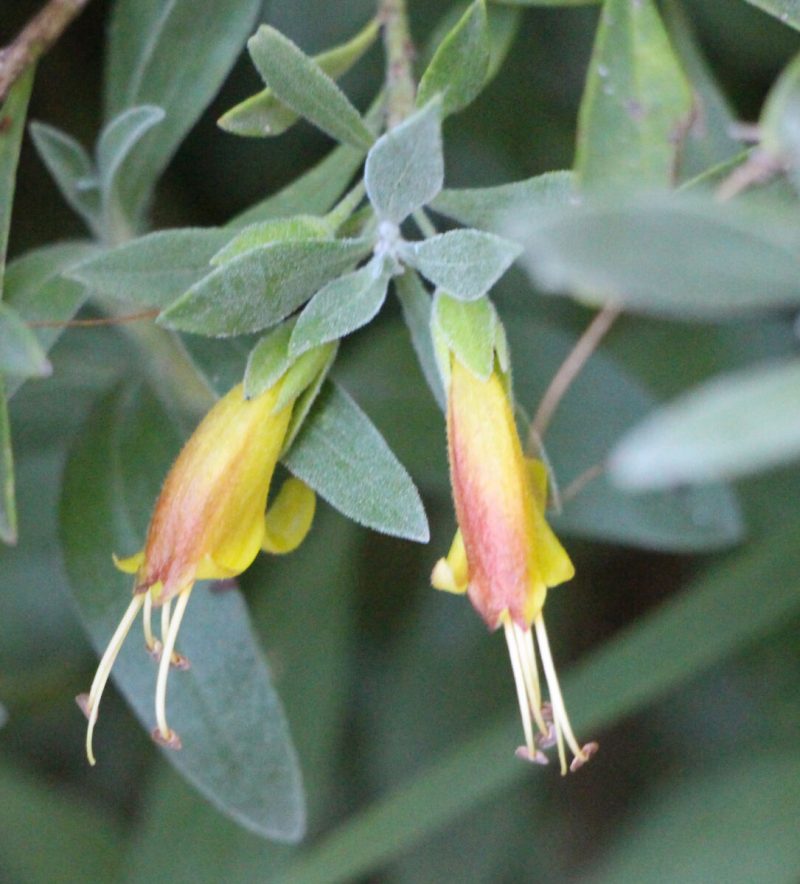
What a great plant Eremophila hygrophana is. Even though we lost our original plant after five years we were emboldened to plant another in February 2019 and this plant is flowering well with a really beautiful large purple flower which contasts well with the greyish leaves.
We first planted Eremophila longifolia in October 2011 and have since planted 6 more, mostly from cuttings. This plant grows to 2-4m high and up to 3m wide with weeping linear grey foliage and many dusty pink tubular flowers. The fruit of Eremophila longifolia are eaten by emus, useful knowledge if you happen to have emus in your garden. This plant does sucker, but often in useful spots, so we encourage it to spread.
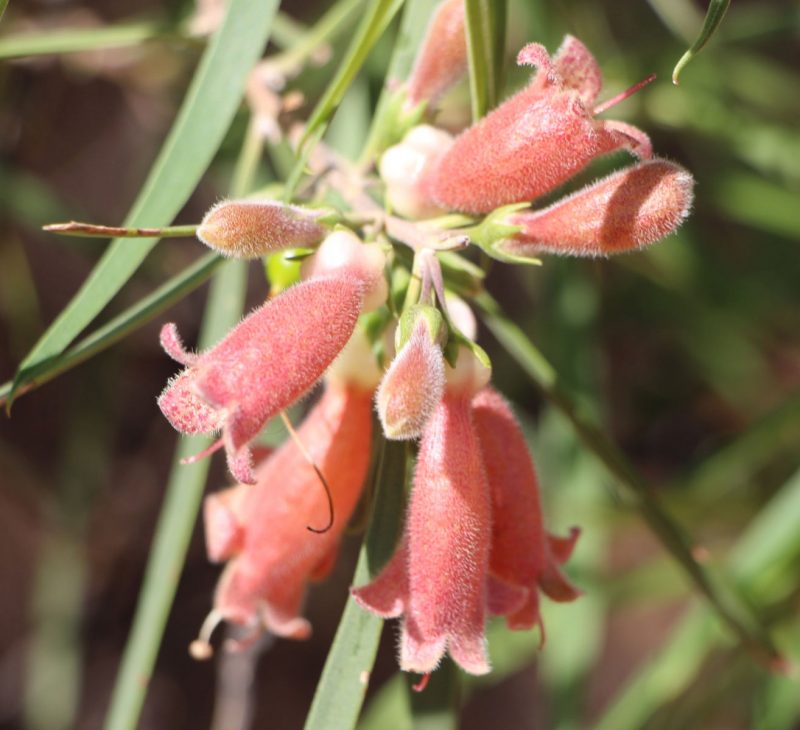
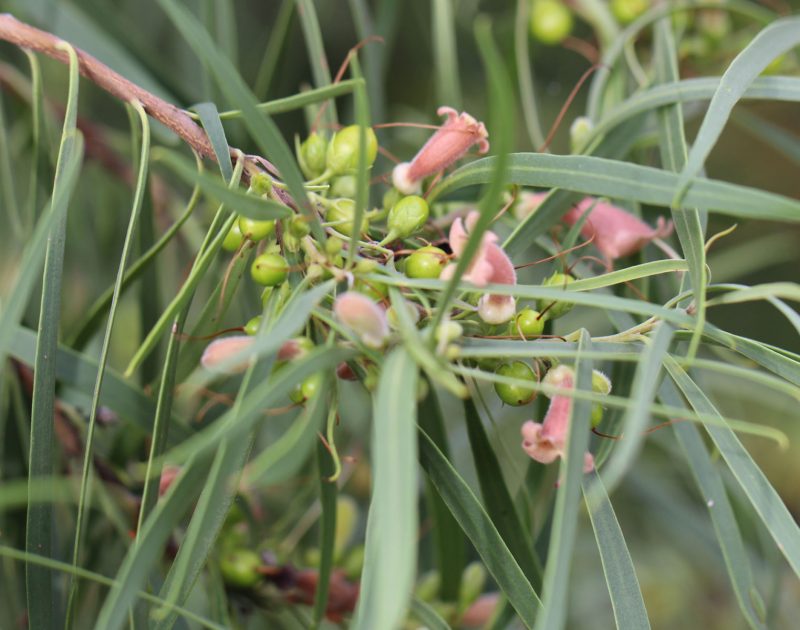
Eremophila mackinlayii subsp. spathulata forms a compact shrub 1.5m high and wide with grey-green leaves and large purple flowers. The shape of the shrub is very pleasing and the flowers are eye-catching.
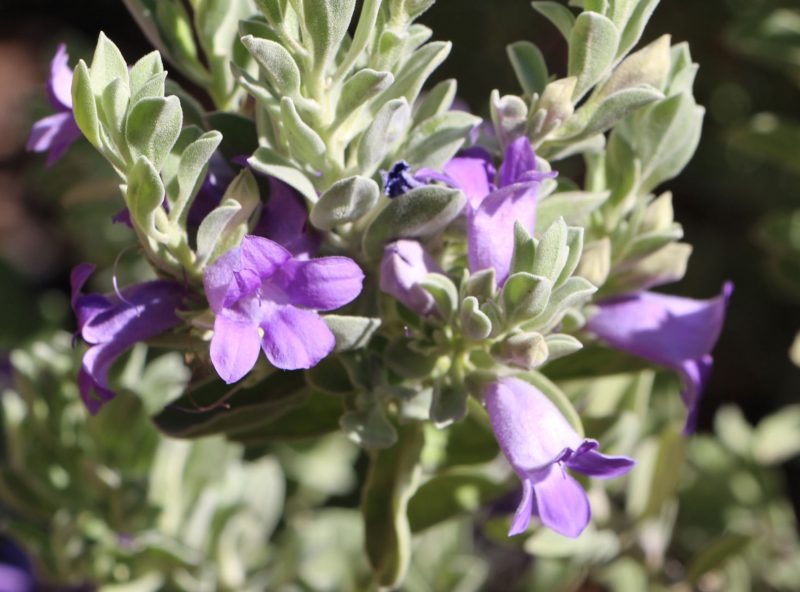
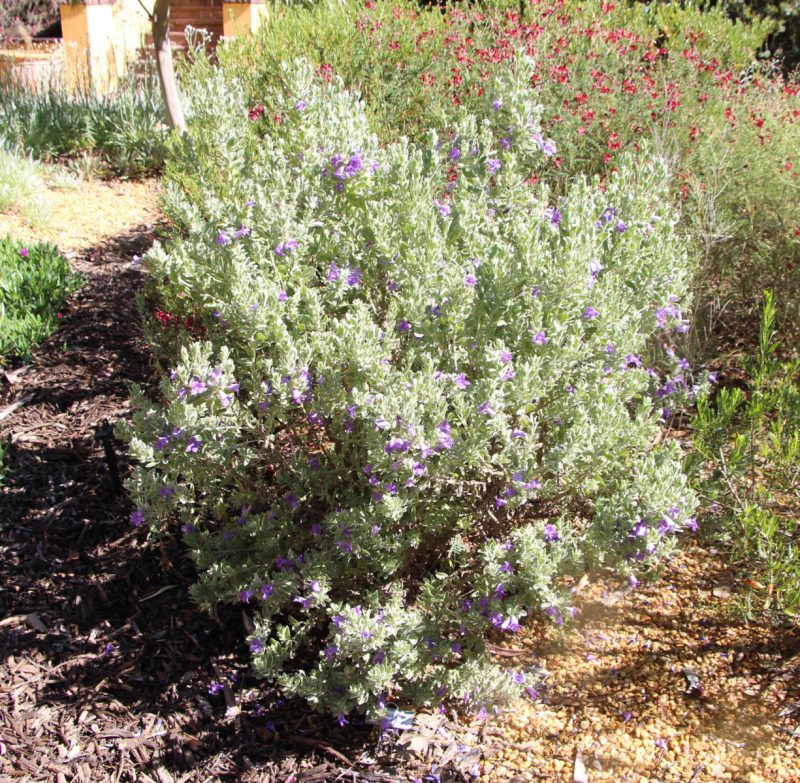
Eremophila maculata apricot form obtained from Port Augusta Nursery and our best performing plant, one that we have propagated many times
Eremophila maculata ‘Aurea’ and Eremophila maculata brevifolia for their all year round performance
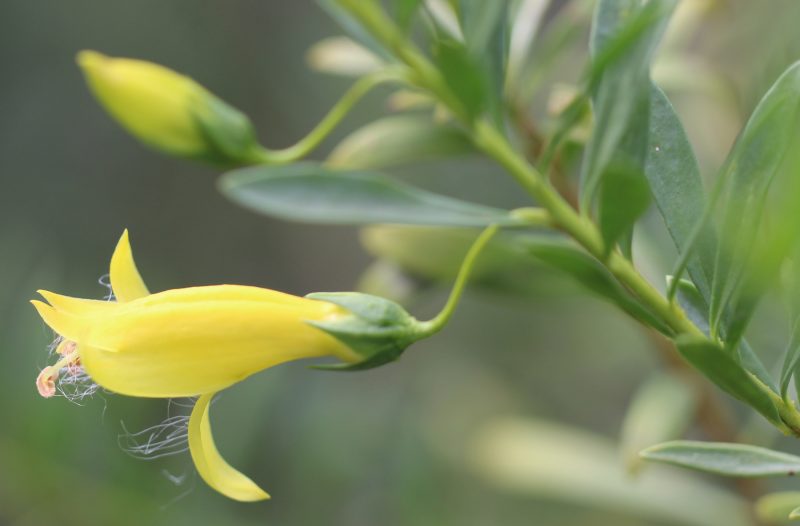
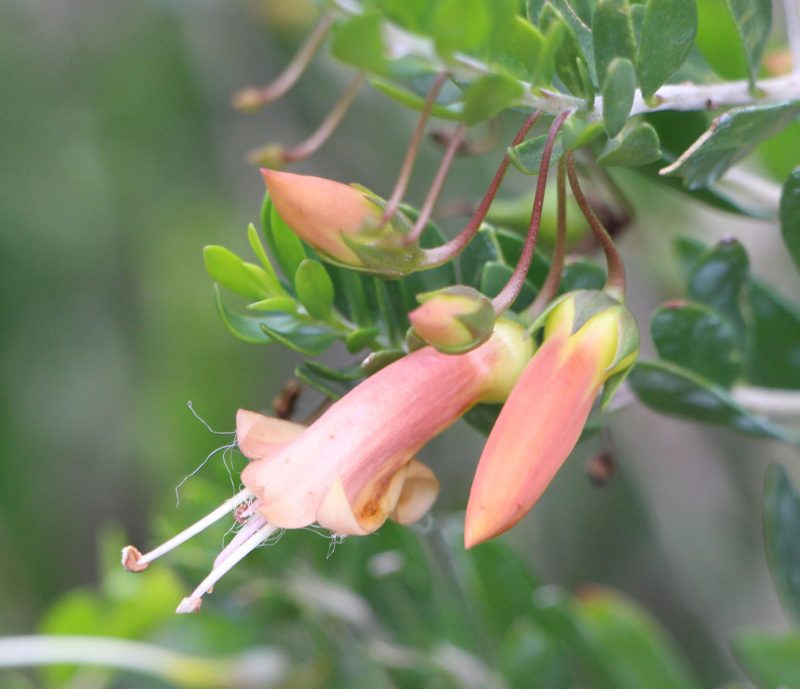
We planted seven Eremophila maculata ‘Compact Lemon’ from 2014-16. This plant is 1m high and wide with many tubular lemon flowers. We liked this plant so much we used three of them at the Terra Australis Garden at the National Arboretum in Canberra, but these plants faced the horror summer of ‘19/’20 and are struggling.
Eremophila maculata ‘Elf’, a compact bush with pink flowers whose foliage turns burgundy in winter in Canberra
Eremophila maculata (purple) , sometimes called ‘Thundercloud’, with large purple flowers
Eremophila maculata x viscida, a large and vigorous bush with masses of mauve flowers
One of our most successful eremophila plantings is a group of 8 ‘Mallee Lipstick’, a cross between E. glabra and E. maculata which we planted in 2014-5. These plants form a shrub 1m high and 1.5m wide with grey green leaves and bright pink flowers over many months.
We planted Eremophila oldfieldii ‘Honeyeater Cheer’, grafted, in November 2011 and have been rewarded with a shrub 2m high and wide which blooms with a dark orange flower much beloved by Eastern Spinebills. We have planted another 5 Eremophila oldfieldii in recent years and eagerly await their growth and flowering.
Eremophila oppositifolia ‘Hardy Harry’ with lovely grey foliage and white flowers over a long period
Eremophila racemosa with orange buds and pink flowers
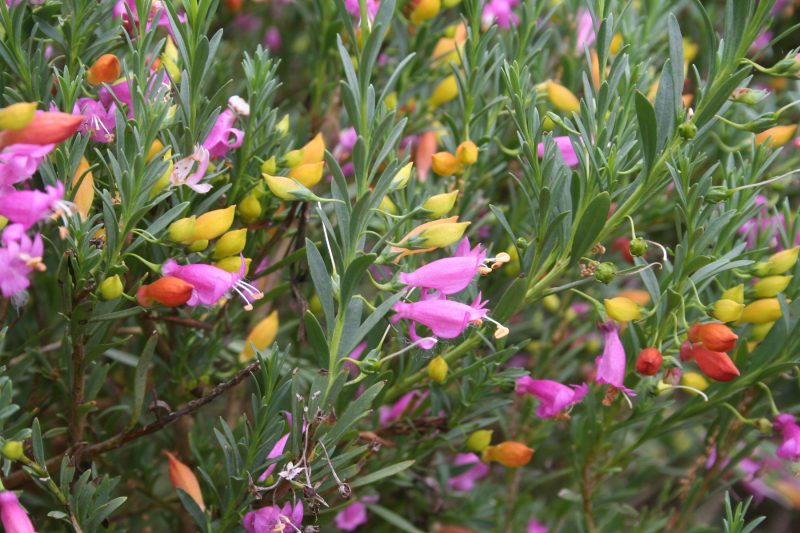
Eremophila ‘Yanna Road’ with a pleasing contrast between grey foliage and pink flowers.
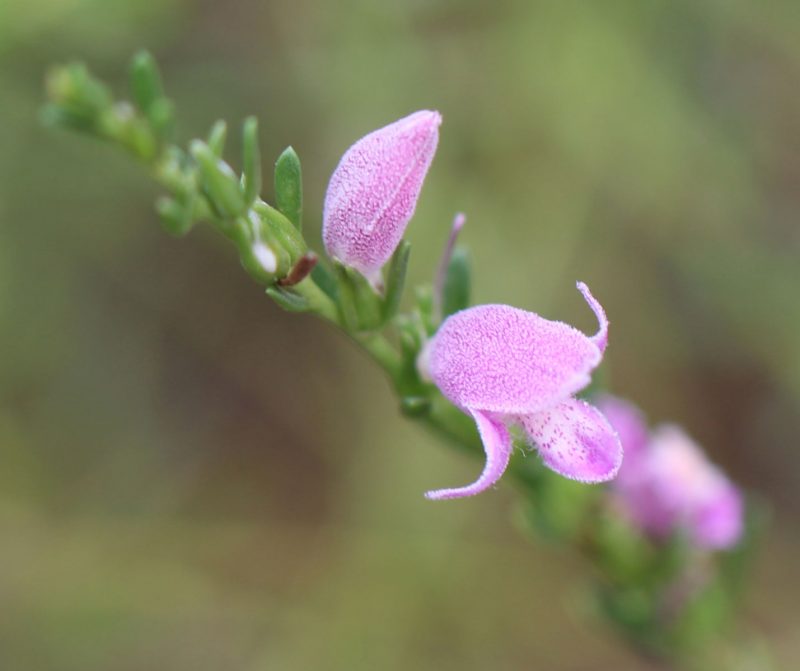
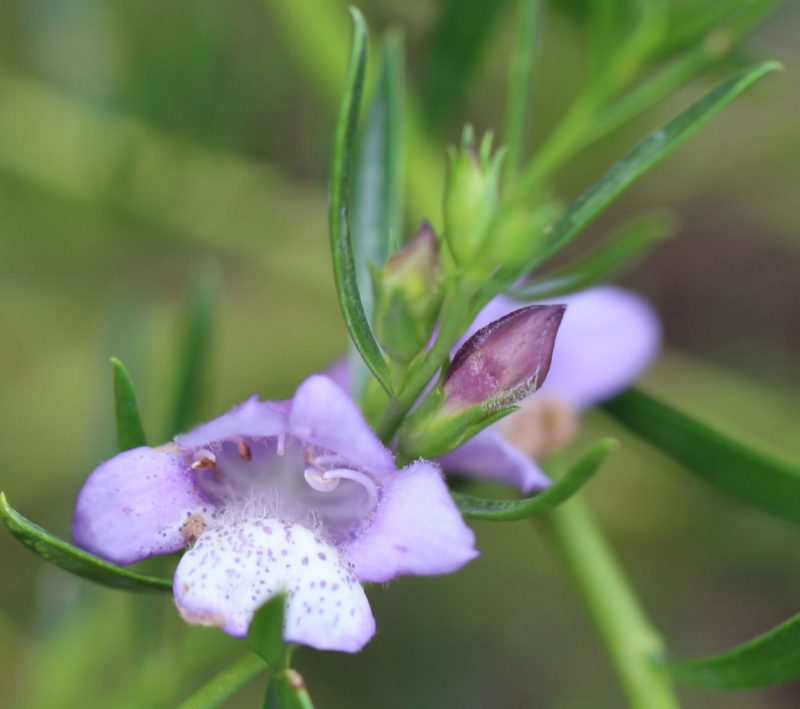
Eremophilas work well in pots. I have a group of nine Eremophila ‘Desert Passion’ in planters near the front door which flower well. I have also had many years of growing Erermophila ‘Yanna Road’ in a pot. When I tried to transplant it into the garden it died, a;though we have since managed to grow three in the garden.
I notice from my notes that many eremophilas do resent being moved – I have had a series of deaths after transplantation. However, the ‘super’ plant Eremophila maculata ‘Aurea’ was originally ripped from the ground and discarded, before being resurrected and moved to another position where it thrives many years later, so not all eremophilas baulk at being moved.
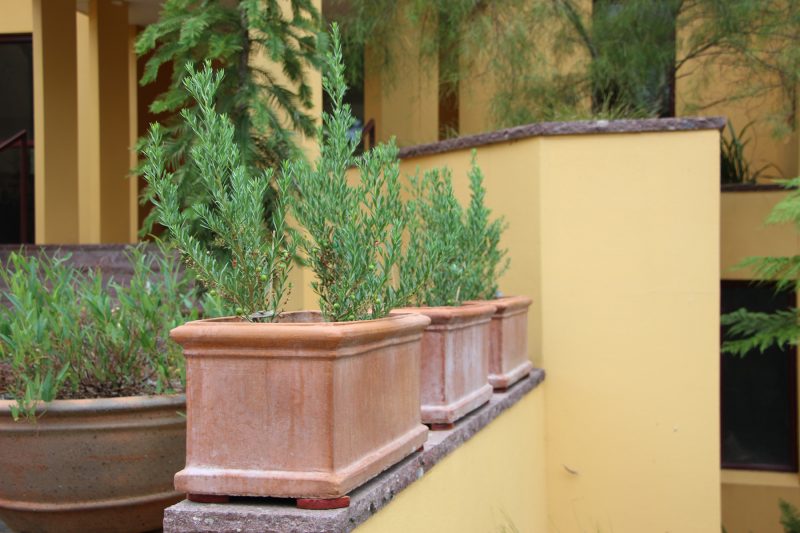
Eremophilas make useful hedges
In the Australian Arid Lands Botanic Garden near Port Augusta there are some small display gardens which feature eremophila hedges. Both the blue flowering, grey leaved Eremophila hygrophana and red flowered, green leaved Eremophila maculata brevifolia were clipped very successfully into low hedges and were mobbed by feasting honeyeaters. They can also be used as larger screening plants to boost the bird and insect life in your garden.
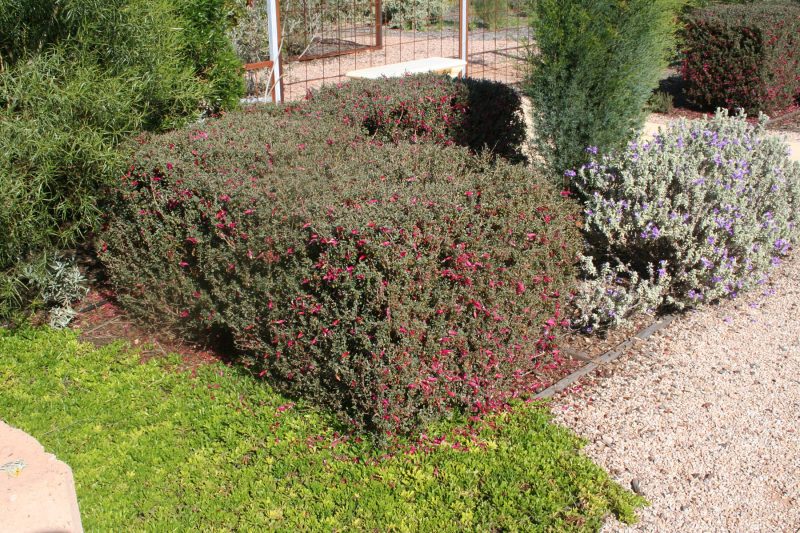
Eremophilas are useful plants in garden design
Eremophilas, like most garden plants, appreciate judicious watering, pruning and fertilising to encourage them to put on their best display in the garden. They grow in a wide variety of habitats and conditions and can be used in many ways in the garden, hedges, groundcovers, screens and shrubs. They will attract both insects and birds to your garden. Try some eremophilas in your garden design – they are surprisingly adaptable to a variety of garden conditions.
